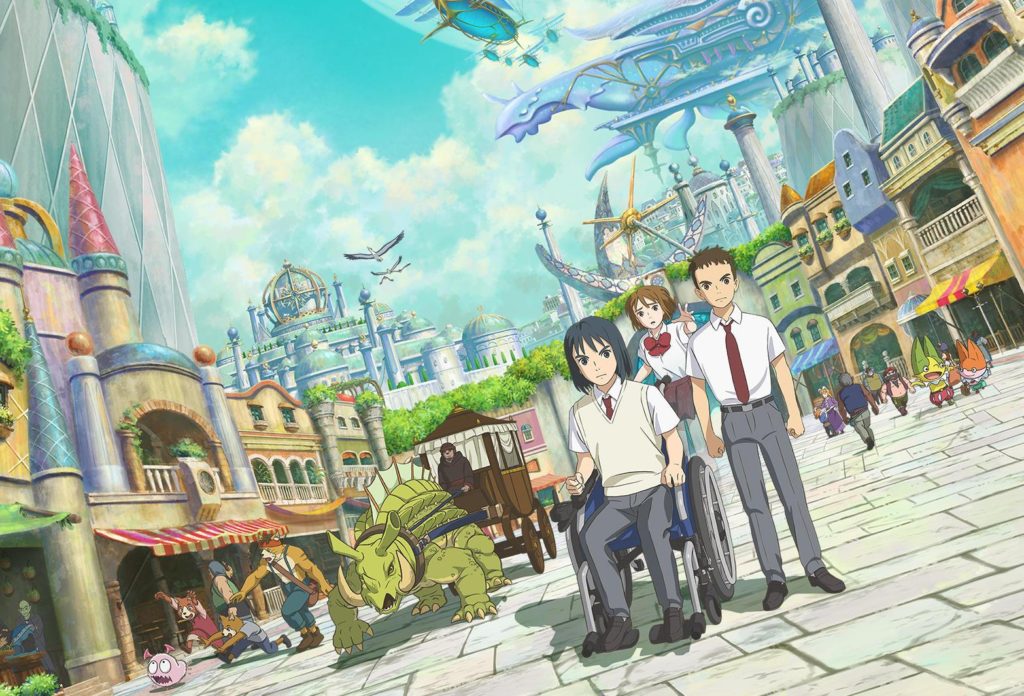
Yu, Haru and Kotona are best friends who are all attending high school together. When Kotona’s life is threatened by a mysterious man in black, Yu and Haru discover that the key to saving her is to travel to another world – a fantasy realm filled with magic. The two worlds are closely intertwined, and actions taken in one can have a profound effect on the other.
I’ve often waxed lyrical about how much I love the original Ni no Kuni. Despite its gameplay issues, it’s a charming and delightful experience that puts players at the heart of their own interactive Studio Ghibli story. The second game, although lacking that original fresh charm, is still a solid piece of work that I sunk many an hour into. But what about this movie spin-off?
Rather than being based on either game, this movie tells its own story, retaining only the premise of a fantasy world whose souls and personalities are intertwined with our own. The hero of the piece is Yu, a shy wheelchair user with a secret crush on his best friend Haru’s girlfriend, Kotona. When Kotona is randomly stabbed by a clearly evil force, Yu and Haru end up in the fantasy world, where saving the life of a princess who looks just like Kotona turns out to be the key to saving Kotona. As the two boys learn how to travel between worlds, however, things become more complicated, as Haru is tricked by the forces of evil into believing that killing the princess is the only way to ensure Kotona is properly saved.
What results is an on-the-rails fantasy experience that is ultimately so disappointing that I actually felt a little sad after watching it. Even the commendable novelty of having a disabled main character is rendered pointless when it turns out Yu can walk absolutely fine in the fantasy world. In fact, no big deal is even made of his miraculous recovery – he just gets up and starts walking around without a second thought.
The best that can be said about the story is that it’s easily forgettable, and won’t stick in the mind for too long after you’ve watched the film. Disappointingly, the female characters get little to do – Kotona and her opposite number, Princess Astrid, exist only to be victims that the main boys need to save (and, of course, fall in love with). The potentially interesting Bertha, head knight of Evermore in the other world, gets far too little screentime, even losing straight away in the one battle she participates in. Not that any of the characters get that much development – most of the film is dedicated to Haru randomly being an angry jerk, and Yu having to oppose him.
Given the Studio Ghibli involvement in the art style of the original game, it should come as no surprise that that style is retained here. Yet this is a visual aesthetic that’s merely a pale copy of the Studio Ghibli experience, a copy that has the look but none of the soul. Music-wise, the ever-talented Joe Hisaishi is in charge of the score, and despite the movie’s other failings, I can’t deny the nostalgic effects of hearing some of the themes from the games scattered throughout.
Final Thoughts
I knew this movie was never going to be a classic, but I would have been satisfied with even a mildly enjoyable fantasy film. Instead, it left me feeling disappointed and unsatisfied. Don’t bother with this movie – save yourself the trouble and just pick something from the Studio Ghibli catalogue instead.
Tier: Wood
